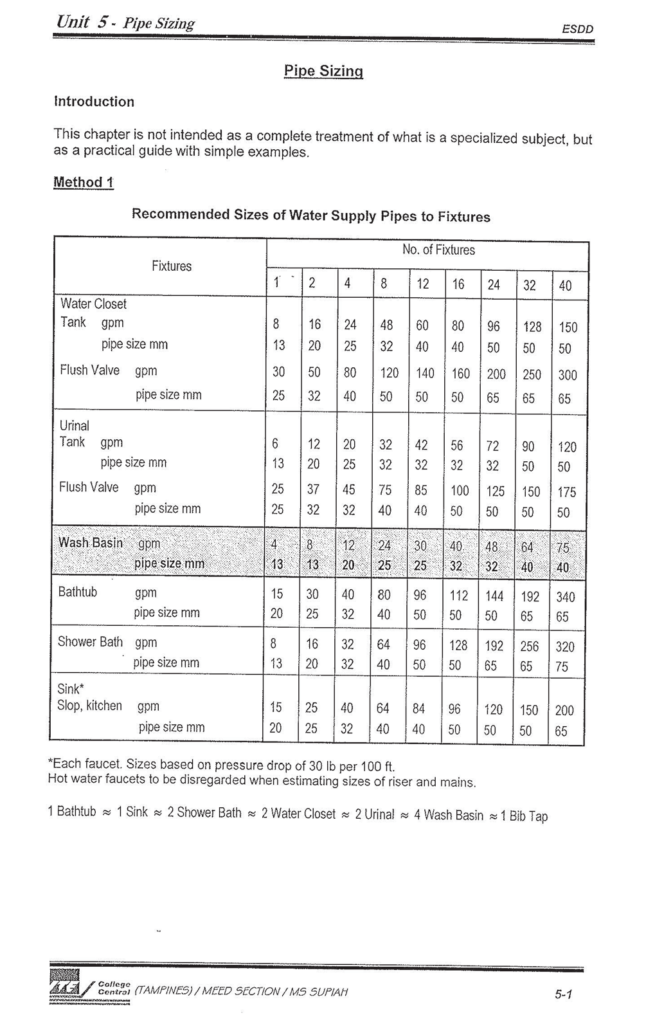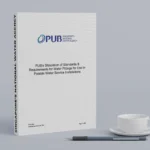Plumbing Pipe Sizing Calculator Note:
01. Enter Input Data.
02. Number of Fixture, Sink, SH, WC, UR, WB…etc…
03. If there is no fixture, enter zero.
04. The Output result will show “Flow Rate (GPM) & Pipe Size (mm Dia).
For Example Calculation
Number of Sink is 5.
No. of Bath Tube is 1.
Number of Shower is 2
No. of WC is 5.
Number of Urinal is 5.
The Output Result is “40” or “50” mm Diameter Pipe Can be used.
Reference Table

Also Download – Booster Pump Sizing & Transfer Pipe Sizing
Subscribe My Channel
Plumbing pipe sizing calculator is crucial for ensuring efficient water flow and proper drainage in residential, commercial, and industrial buildings. The sizing of pipes depends on various factors such as the flow rate, pressure drop, velocity, and the type of material used for the pipes. Here’s a basic overview of the process:
Determine the Required Flow Rate
The first step is to calculate the total flow rate required for the system. This is typically based on factors such as the number of fixtures (sinks, toilets, showers, etc.) and their expected simultaneous usage.
Calculate Pressure Drop
Pressure drop refers to the decrease in pressure as water flows through the pipes. It’s important to calculate pressure drop to ensure that the system can provide adequate water pressure at all fixtures. Factors affecting pressure drop include pipe length, pipe diameter, flow rate, and pipe material.
Select Pipe Material and Type
Common materials for plumbing pipes include copper, PVC (polyvinyl chloride), CPVC (chlorinated polyvinyl chloride), PEX (cross-linked polyethylene), and galvanized steel. Each material has its advantages and limitations, and the choice depends on factors such as cost, durability, and compatibility with local building codes.
Refer to Plumbing Codes and Standards
Plumbing codes and standards, such as those provided by the International Plumbing Code (IPC) or the Uniform Plumbing Code (UPC), provide guidelines for pipe sizing based on factors like fixture units, pipe material, and water supply demand.
Use Sizing Charts or Software
Many plumbing codes provide sizing charts or tables that specify the recommended pipe sizes based on flow rate and pressure drop. Alternatively, there are software programs available that can help engineers and plumbers calculate pipe sizes based on specific parameters.
Consider Future Expansion
When sizing pipes, it’s important to consider potential future expansion or changes to the plumbing system. Oversizing pipes slightly can accommodate future growth without the need for major modifications.
Consult with a Professional
For complex plumbing systems or projects requiring precise calculations, consulting with a professional plumber or engineer is recommended. They can ensure that the sizing is done correctly and meets all relevant codes and standards.
Download | OneDrive, Google Drive









